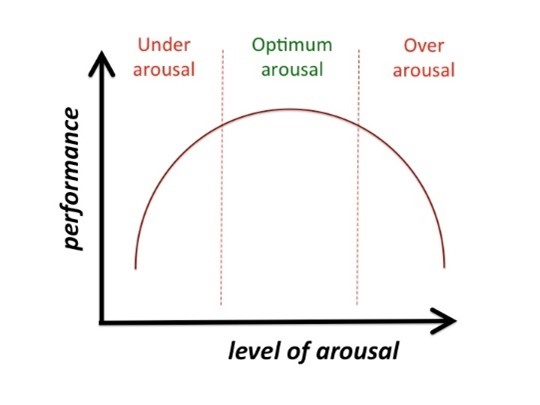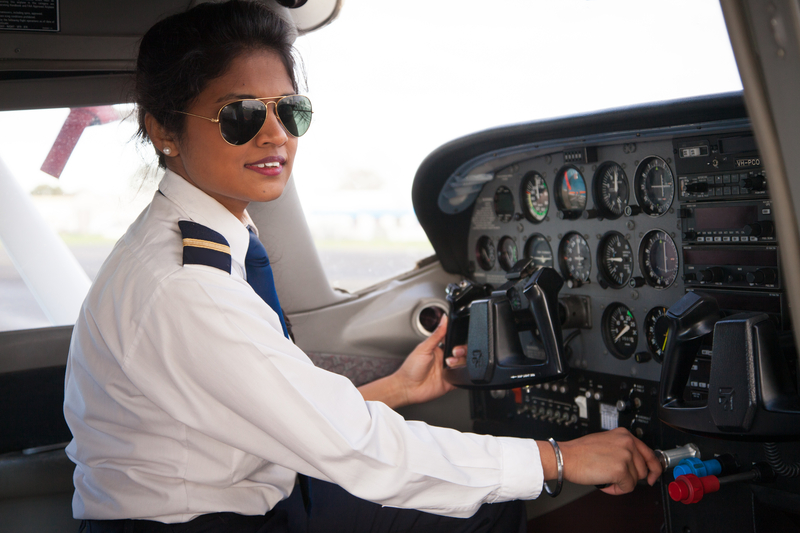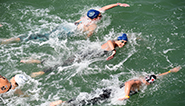Akin to some sporting disciplines (e.g., motorcycling, Owton, 2022), aviation requires a pilot to remain cool under pressure, be attuned to a fast and constantly moving environment, thinking ahead all the time of expected and unexpected possibilities. This enhancement of sensory processing, focus and visual attention can increase epinephrine levels, heart rate, and decrease cortisol levels. This demonstrates that flying can sometimes replicate the results associated with exercise and the reduction of stress levels (Owton, 2022; Vaughn et al., 2021). A combination of techniques (known collectively as psychological skills training) that are often drawn on by sports psychologists may help commercial pilots maintain - or improve - their performance.
Training to excel in any sport and learning to become a pilot both require copious amounts of time, effort, focus, and motivation. International travel is an essential part of life for elite athletes when competing and training (Waterhouse & Edwards, 2011). The travelling athlete and travelling pilot may have to contend with similar factors. This can include pretravel preparations, adapting to new destinations, nutrition, rehydration, and preventing fatigue and illness (Nicolic, 2019). These types of challenges are met by pilots because they need to remain physically fit, healthy, and injury-free.
What makes travelling significant and novel for pilots, however, is the working long hours while travelling in a confined space at high altitude requiring them to monitor their nutrition, hydration, stress, and fitness levels; their main concern being maintaining a Class 1 medical enabling them to keep working safely and doing what they love.
Psychological Skills Training (PST)
· Arousal regulation
The aviation industry still draws on the basic and dated Inverted U theory (Yerkes & Dodson, 1908) for understanding how an ideal state of arousal helps an athlete perform at their best.

In sports, however, Individual Zones of Optimal Functioning (IZOF) (Hanin, 1997, 2000) takes into account an individual’s emotions. For example, everyone performs at their best when they are within their pre-performance anxiety zone; this allows for the differences that might vary on a sprinter’s performance compared to an endurance marathon runner. Similarly, a pilot might need to manage or ‘psych up – psych down’ their arousal levels for different stages of a flight Leaving this zone has a detrimental effect on performance. Optimum performance requires the performer to be within their anxiety zone and within their optimal levels of emotion.
Arousal regulation, therefore, helps athletes achieve a pre-performance optimal arousal zone which allows them to perform at their best. Sports psychologists teach athletes how to ‘psych up’ or ‘psych down’ depending on how emotionally charged they need to be, for example at different phases of flights; a technique which could be very effective for commercial pilots to help them remain calm under stress or pressure.
· Goal setting
Athletes are always setting goals as a motivational technique, but effective goal setting is a challenging process. Locke and Latham’s goal setting theory (1981) suggests that goals should be set to a timescale (e.g. short- and/or long-term). They should also be outcome, performance and process focused.
The principals involved in setting goals is via an acronym known as SMARTS: Specific, Measurable, Attainable, Realistic, Timely, Self-Set. This helps athletes follow through with smaller tasks remaining focused, motivated, and committed to achieving their longer-term goals. This technique is well suited to assist commercial pilots with their motivational levels and performance, especially in challenging situations.
· Pre-performance routines
Successful athletes develop effective pre-performance routines or ‘rituals’ which can be used to help them perform under pressure and concentrate on factors that are in their control. Pre-performance routines do not need to be complicated but are performed to help trigger or ‘switch on’ optimal performance states. You might see athletes turning on their “Race Face” which is a term referring to the mental posture that prepares and readies a motorcyclist for their race (Open University; LONDON 2012, VIDEO)
Similar to athletes, commercial pilots draw on checklists as part of their pre-performance routine but may but some may benefit from engaging in additional rituals prior to flight, or prior to a specific task such as landing.
· Progressive Muscle Relaxation
Under highly stressful situations, progressive muscle relaxation is a technique taught to athletes to tense and relax their muscles one by one to reduce stress, anxiety and blood pressure levels to enhance performance. This links to an individual’s zone of optimal functioning as it can be used to regulate arousal levels, for example, in a pre-performance routine. Such a technique is highly applicable for pilots who are regularly required to perform and maintain calmness under intense pressure.
· Imagery
Imagery has been found to be an effective technique for psyching up and psyching down and relates to a multisensory process of seeing yourself performing or practicing a sport related skill or imagining yourself competing in a certain situation. Paivio’s (1985) framework identifies two primary functions of imagery, Motivation and Cognitive, which are further separated into General and Specific categories.
In aviation, this is termed ‘sofa flying’ and has been shown to be an effective cognitive tool to enhance performance.
· Self-Talk
Positive self-talk is used as a technique to help improve performance which can easily be applied to flying. Examples of self-talk during training and competition such as, “Keep going” or “Focus on the ball”, helps attentional focus and enhances self-belief which could be adapted to pilot’s goals. Sports psychologists often work to eliminate negative self-talk which may have become a critical voice from a previous trainer or critical parent. Negative self-talk could be a concern on a flightdeck as this could have an impact on performance.
· Cognitive Behavioural Therapy (CBT)
CBT is a talking form of psychotherapy that helps individuals work through their problems by identifying negative emotions, thought patterns, or types of behaviours that might be interfering with their performance or satisfaction in life. CBT is an approach implemented by a psychologist to try and replace any identified negative aspects with more practical and realistic solutions and positive thoughts.
· Success and FailureAttribution theory (Weiner, 1986) looks at how performers perceive success and failure of their performance and what effects this has on future performances and motivation.
· Locus of causality relates to whether a pilot perceives the cause of success or failure to lie with ‘internal’ (relating to oneself – ability, effort, and preparation) or ‘external’ (environmental/situational factors – things outside your control).
· Stable factors are those which remain a constant (e.g., ability, talent). An unstable factor in your performance could be considered luck and amount of effort. When people give stable attributions for failure, the expectation is that failure will recur.
To enhance good practice an athlete or pilot tends to show the attributes within the following dimensions:
INTERNAL. STABLE. CONTROL = SELF CONFIDENCE & HIGH ACHIEVEMENT MOTIVATION.
Beneficial Attributes
Athletes develop resilience by drawing on coping strategies that effectively guide them through the challenges they may experience in training, performance, competition, or injury. Athletes learn how to deal with pressure, how to lose, how to overcome failure, receive criticism, prepare physically, emotionally, and psychologically, how to read a game, make quick and effective decisions and how to work together as a team. These attributes of an athlete can be beneficial in life, in sporting competition and, specifically, as a commercial pilot. Equally, to develop such resiliency a commercial pilot may benefit from many of these techniques given the similar demands placed on their mind, body and self, regarding their health, nutrition, and training. Supporting them performing successfully and calmly under stress and/or (commercial) pressure.




Rate and Review
Rate this article
Review this article
Log into OpenLearn to leave reviews and join in the conversation.
Article reviews